After seven years of study, federal officials have recommended a $453-million plan that would restore an 11-mile stretch of the Los Angeles River but leave much of its banks steep and hard to reach. Advocates continue to press for a more ambitious alternative that would bring more people to the river, improving parks and recreation as well as ecosystems. Comments on the Army Corps Study can be emailed to comments.lariverstudy@usace.army.mil until November 18, 5 p.m.
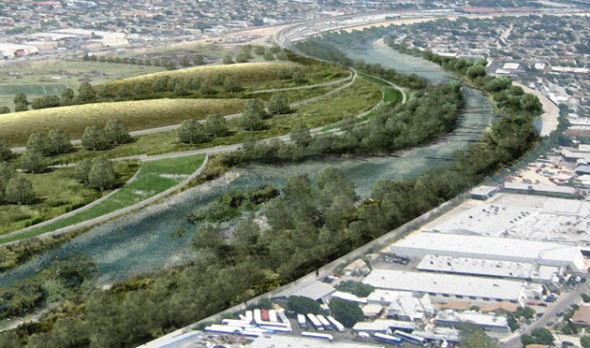

Federal officials recommend $453-million L.A. River restoration plan
The US Army Corps of Engineers has selected an alternative for advancing the much touted restoration of the Los Angeles River. As part of the Los Angeles River Ecosystem Feasibility Study (or the ARBOR Study — Alternative with Restoration Benefits and Opportunities for Revitalization), the tentative plan selected, known as Alternative 13, is the second-cheapest of four options detailed in a much-anticipated feasibility study released on September 13.
The project would increase habitat by 104 percent, restoring 588 acres along several key points of the river from Griffith Park to downtown. It would restore a historic wash at Piggyback Yard near Union Station; remove concrete from the river bottom at its confluence with the Arroyo Seco, a major tributary; widen the river by 300 feet to form a freshwater marsh in an area known as Taylor Yard, near Glassell Park; and add a side channel behind Ferraro Fields.
We can learn much about urban rivers everywhere from the story of the Los Angeles River. From its role in the settlement of a city and its importance as a water source to its ultimate transformation and potential renewal, its larger history mirrors the story of urban rivers the world over. — Blake Gumprecht in “The Los Angeles River, It’s Life, Death, and Possible Rebirth”
River Restoration Feasibility Alternatives
The alternatives outlined in the report would cost between $375 million and $1.08 billion and restore the river’s natural ecosystems without weakening its ability to control floods. The other alternatives include:
- Alternative 10, or ART (ARBOR Riparian Transitions), is the minimally acceptable alternative priced at $346 million. According to the study, it would result in a 93 percent increase in habitat (528 acres). Work would include: minimal restoration at Taylor Yard, but not at the other confluences, widening of Taylor Yard by 80 feet with a small terraced area by the Bowtie parcel, restoration at Piggyback Yard.
- Alternative 16, or AND (ARBOR Narrows to Downtown), is a $757-million project that includes the features of both Alternative 10 and 13 with extensive work on the Piggyback Yard. It would increase habitat by 114 percent (659 acres).
- Alternative 20, or RIVER (Riparian Integration via Varied Ecological Introduction), includes all the elements of previous alternatives with the restoration of the Verdugo Wash near Glendale and the wetlands of the Los Angeles State Historic Park. Habitat would increase by 119 percent (719 acres) at the cost of $1.04 billion.
The 51-mile waterway has been maligned since the federal government lined much of it with concrete to serve as a flood-control channel starting in the 1930s. Today’s Army Corps plans to atone for its ecological sins, but it always comes to the question of money. River advocates want to see a more ambitious program that would integrate public recreation with the ecological restoration. Omar Brownson, executive director of the L.A. River Revitalization Corp., a nonprofit created by the city of Los Angeles, said: “When we look back a generation from now, that’s going to be one of the ways we reimagine the river and recognize that this isn’t just a flood-control channel, it’s a vital part of our city.”
The City Wants More River
The Los Angeles City Council in August adopted a resolution endorsing Alternative 20 as the one “that results in the most expansive ecosystem restoration.” Additionally, community organizations have announced a Los Angeles River Rally to be held at L.A. State Historic Park on Saturday, September 28 at 12 noon.
“California lags far behind the rest of our nation in Army Corps-sponsored river restoration efforts. This is our only opportunity to get the best river restoration plan possible for the Los Angeles River. It’s time for all Angelenos to rally around our cry: We want our RIVER…and we want it right now!” said Meredith McKenzie of the Urban Rivers Institute in a statement.
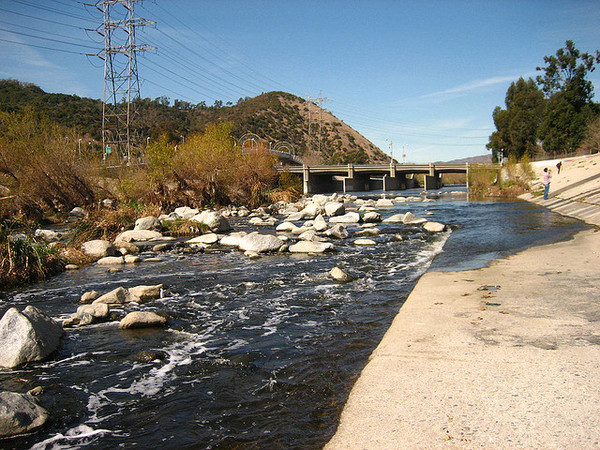

Under Alternative 13 endorsed by the Army Corps, the federal government would foot just over 30% of the bill, with the city of Los Angeles funding the rest, including the acquisition of valuable land. The Army Corps said it first evaluates ecological benefits because restoring natural systems is its primary mission. The cost estimates do not include additional spending for recreation, which is evaluated later and could add $6 million to the cost of the agency’s preferred plan. Some of the other alternatives would require the federal government to provide a greater share of the money.
The river
is a rigorous mistress,
but when you tickle her
with your deeds, you can hear laughter
from beneath her concrete corset.
Lewis MacAdams
A History of Abuse and Rebirth
The Los Angeles River was naturally an ephemeral, braided stream that would remain dry for months, only to rush with water during storms. In the chaparral ecosystem, rivers are the fount of life, where willows and sycamores sprout, water fowl come to float and dine, and roving coyotes and mountain lions replenished themselves.
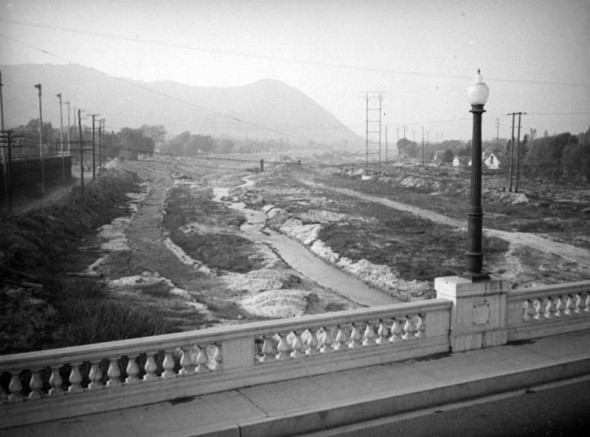

The needs of real estate superseded what was once sustenance for a young agricultural pueblo covered in vineyards and orchards. That attraction to water flowing into desert gardens encouraged residential development of the river’s bottomlands. Predictable catastrophic floods in the late 19th and early 20th century led the federal government to encase much of the waterway in concrete and straighten its course from the San Fernando Valley to Long Beach, a project that was completed in the late 1950s.
Decades later, there were calls to restore the river as much-needed habitat and open space. Los Angeles County completed a master restoration plan in 1996, calling for bikeways and parks. In 2007 Los Angeles produced its own blueprint for revitalizing the river ecosystem and providing green space in the heart of the city. In 2010 the U.S. Environmental Protection Agency declared the L.A. River a “navigable” waterway under the federal Clean Water Act; it is now legal to kayak down a stretch of it.
Then Great Spirit made trees and lakes and rivers on the back of six giant turtles. When he was finished, he looked at the beautiful land he had made. Great Spirit was very pleased. But soon trouble came. The giant turtles grew restless. They wanted to leave. — From a Gabrielino-Tongva Folktale
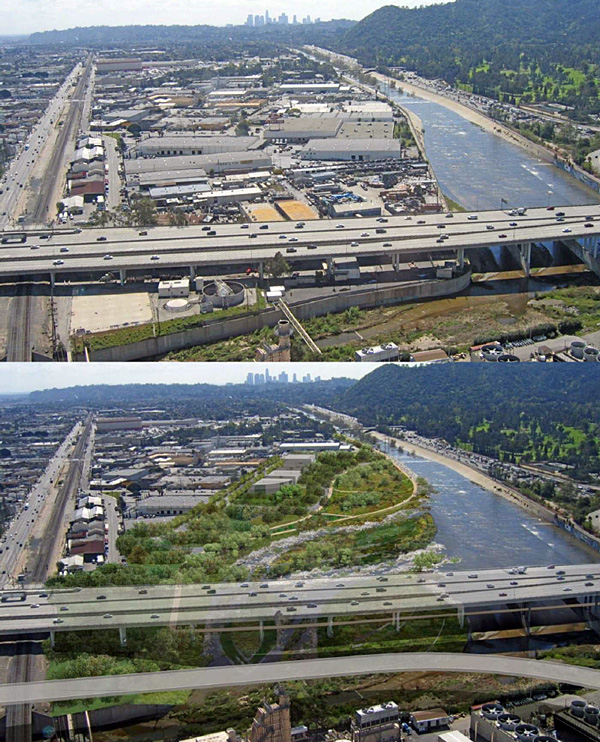

45-Days for Public Comments…
The full ARBOR report can be read here. Details on the River Rally are available here. The public meeting will be held October 17, 5:30 to 7:30 pm at the Los Angeles River Center on 570 West Avenue 26, Los Angeles. Comments can be emailed to comments.lariverstudy@usace.army.mil from September 20 until November 18, 5 p.m. After a 45-day public comment period, the Army Corps will make its final recommendation. The project then has to be authorized and funded by Congress, another lengthy process that puts construction years into the future.
Sources
Blake Gumrecht: The Los Angeles River, It’s Life, Death, and Possible Rebirth, The John Hopkins University Press, Baltimore, 2001.



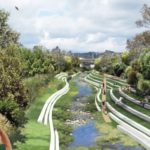
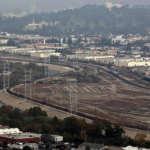
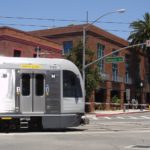
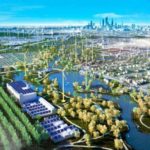






Pingback: LA River